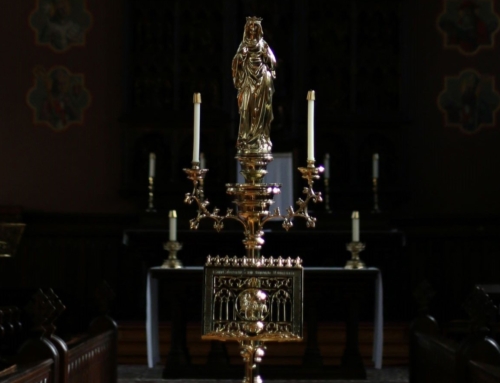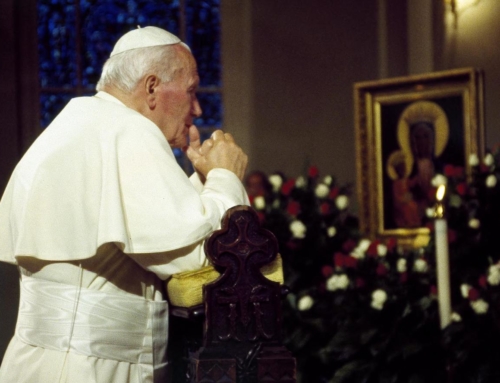If I were a betting man, I would guess you know next to nothing about Lithuania. Though she boasts surviving Russian and German occupation and was the first to leave the Soviet Union; though she restored her culture after Polonization and Russification and maintained her language (a living relic); though she has a weirdly good basketball team (with the raddest official T-shirt of all time); she is seen as a footnote in world history, culture, and politics. Students don’t study Lithuanian in school. Families don’t order Lithuanian take-out after a long day. In fact, Lithuanian-Americans make up only about 0.2% of the U.S. population.
Friends of Dominicana in the D.C. area may notice something peculiar, then. The enormous National Shrine is composed of many chapels representing various U.S. Catholic populations (there are Polish, Irish, and Hispanic chapels, for example). Why then is one of the largest and most prominent of these chapels dedicated to Lithuanians?
In part, because of fortune—another group was slated to fill the spot, but could not produce the funds (though, of course, God’s providence touches contingent things). In part, because of resilience—the chapel was built during Soviet occupation as a symbol of Lithuania’s endurance in her American diaspora. And of course, simply because of Lithuania’s faith. The Hill of Crosses is a major pilgrimage site. The original Divine Mercy image calls Vilnius, Lithuania’s capital, its home, where the first Divine Mercy Sunday was celebrated. Additionally, this “City of Mercy” houses the tomb of Casimir, the great Lithuanian saint and prince whom many Catholic youth name as their patron. After his election, Pope John Paul II even chose to pray in the Lithuanian “Gates of Dawn” chapel at Saint Peter’s Basilica over the chapel of his own native Poland.
Lithuania’s vibrant devotion is there, but I think this strange chapel is in America’s largest church particularly because of its patroness: Our Lady of Šiluva.
The story is simple. The village of Šiluva (pronounced SHIL-uh-vah), once vibrantly Catholic, was stripped of its faith by the Protestant Reformation. The church at its heart was ransacked, with the pastor burying its liturgical items to protect them. The now-Calvinist people of Šiluva, in their ignorance, walked over vestments, chalices, and an image of the Blessed Virgin Mary daily. After Catholicism had faded into mere memory in Šiluva, a mysterious woman—swaddling a baby and weeping—appeared, first to a few children and then to the whole town, essentially a Protestant congregation. On this second occasion, she gave the reason for her tears: “You plow and seed here where formerly my Son was honored.” Soon after this, the people of Šiluva returned to the Catholic Faith which their fathers had planted—literally. The buried items were found, and the image of Mary was given particular prominence in the church, later remade into a Basilica. Today, Our Lady of Šiluva is celebrated with particular devotion in her home on the feast of the Nativity of Mary, called Šilinės.
There are many other beautiful tidbits about the story, but the point is this: Our Lady of Šiluva has her own chapel at the heart of the American Church because—I think by God’s providence—she is the patroness we need right now. She can be the one to dig up the treasures of baptism buried in all our lapsed Catholics. She can be the one to help unify all Christians in the One True Faith. She can bring us out of our own personal distractions, those areas where we plow and seed, perhaps now on our phones rather than in our fields, failing to honor the Lord.
Even if you’re regrettably not Lithuanian, you can perhaps learn from the words of Lithuania’s national anthem, written on the side of the National Shrine’s Šiluva chapel: Iš praeities tavo sūnūs te stiprybę semia—“May your sons draw strength from the past.” This tiny apparition in a tiny town in a tiny country may just be the past from which we can draw strength. Of course, she herself tells us to reap from that one eternal moment of the past, the Paschal Mystery, made present on the altar and guiding us to the brightest of futures.
Šventoji Šiluvos Mergele, melski už mus!
✠
Photo by Augustinas Žemaitis (Wikimedia Commons)







